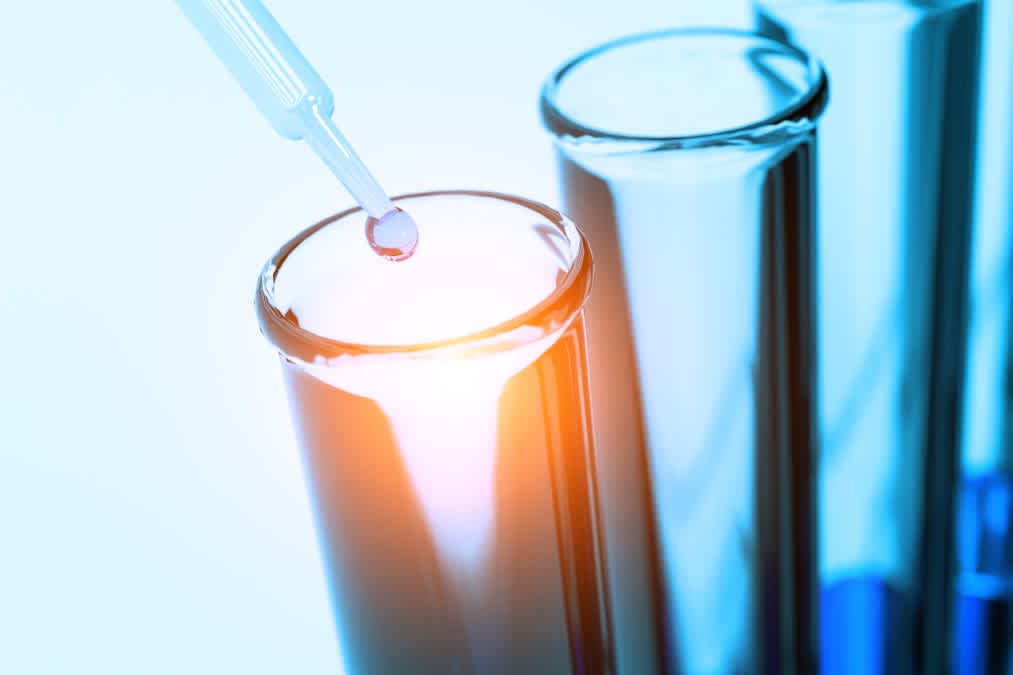HPLC-DAD analysis
High-performance liquid chromatography with diode-array detection (HPLC-DAD) is an analytical technique that separates and characterizes chemical mixtures based on their chemical and physical properties. Due to its relative simplicity, HPLC-DAD is used as a workhorse technique in a range of research areas from food to pharmaceutical analysis.

Some of our HPLC-DAD services
Bisphenol A content
Specific migration testing – terephthalic & isophthalic acids
Substances of very high concern (SVHC) analysis
Preservatives - benzoic acid and sorbic acid
Specific migration testing – Irganox 1076
Pesticide residue screening (extensive package)
Acrylamide determination
Pentachlorophenol (PCP) content in paper and board
Prices excluding VAT.
What is HPLC-DAD used for?
HPLC-DAD is used to assess chemical purity and contamination, which makes it useful across research and industry. In the food industry, HPLC-DAD is used to test products for certain preservatives, additives, and contaminants, such as benzoic acid and aflatoxins, which is essential for ensuring consumer safety and optimal product quality. The technique is also common in the pharmaceutical and food supplement industries for quality control, as it enables precise quantification of active ingredients, vitamins, and impurities.
How does HPLC-DAD work?
HPLC works by passing the sample through a chromatography column. This causes individual components within the sample to separate based on their chemical and physical properties. Each component will then be eluted individually from the end of the column, where a detector like DAD can analyze it.
The diode-array detector scans the samples with a beam of light that varies across the entire ultraviolet and visible light spectrum. It measures the amount of each wavelength of light that is absorbed against the time each chemical species was eluted from the column. Together, these spectral and retention data help identify the different components within the sample and the quantities they are in.
Sample requirements and preparation
HPLC is performed in the liquid phase, which means that solid samples need to be dissolved in an appropriate solvent before testing. The presence of even a small number of solid particles can cause blockages in the column. Solvents (including water) must be of high purity to minimize contamination and possible effects on results. Liquids can be tested, but serial dilutions may be required to produce clearer results.
DAD vs UV-VIS detector
DAD and UV-Vis detectors both work on the same principle of measuring the amount of light absorbed by a sample. The difference is that the UV-Vis detector is set up to measure specific parts of the spectrum at any one time, while the DAD can measure the entire spectrum at once. This makes the DAD method more efficient and convenient than conventional UV-Vis detection for most uses. The HPLC-UV method can, however, be useful when quantifying a specific substance, such as benzoic or sorbic acid.
HPLC-DAD vs LC-MS
(High-performance) liquid chromatography-mass spectrometry (LC-MS or HPLC-MS) is a similar technique that begins with liquid chromatography. The difference is that the separated sample is then passed through a mass spectrometer, where it is ionized, further separated, and detected based on each ion’s mass-to-charge ratio. This makes LC-MS a more sensitive technique, able to detect smaller quantities of each component.
HPLC-DAD generally works best when the user already has some understanding of the contents of the solution, while LC-MS can be used to characterize a totally unknown sample. However, LC-MS can require more training and can be more difficult to interpret, hence why HPLC-DAD is often chosen as a more straightforward detection method.
Furthermore, the data gathered from the DAD detector is different from that gathered through mass spectrometry and can help to split up compounds that would be masked in MS, such as those with very similar chemical masses. Therefore, both techniques offer different insights and can be used in conjunction for a more comprehensive analysis.
Get a quote for analysis services
Measurlabs offers a range of chemical analysis services with HPLC-DAD and related methods, such as HPLC-UV, HPLC-FLD, and LC-MS/MS. We analyze even large sample batches with speed and precision, enabling you to get the insights you need without unnecessary delays. You can contact our experts through the form below to discuss your testing needs, and we will get back to you within one business day.
Suitable sample matrices
- Aqueous solutions
- Organic solutions
- Organic liquids
- Food
- Pharmaceuticals
Ideal uses of HPLC-DAD
- Testing for toxins
- Determining chemical purity
- Testing food for additives
- Amino acid profile determination
Ask for an offer
Fill in the form, and we'll reply in one business day.
Have questions or need help? Email us at info@measurlabs.com or call our sales team.
Frequently asked questions
Common applications of HPLC-DAD include quantifying active ingredients in pharmaceuticals and the characterization of food samples (e.g. identifying amino acids, vitamins, and colorants).
Careful sample preparation is needed before HPLC-DAD analysis, as the presence of solid particles may cause blockages. Also, the diode array detector is generally not as sensitive as the mass spectrometer, which makes HPLC-MS a more appropriate method for identifying unknown components.
Measurlabs offers a variety of laboratory analyses for product developers and quality managers. We perform some of the analyses in our own lab, but mostly we outsource them to carefully selected partner laboratories. This way we can send each sample to the lab that is best suited for the purpose, and offer high-quality analyses with more than a thousand different methods to our clients.
When you contact us through our contact form or by email, one of our specialists will take ownership of your case and answer your query. You get an offer with all the necessary details about the analysis, and can send your samples to the indicated address. We will then take care of sending your samples to the correct laboratories and write a clear report on the results for you.
Samples are usually delivered to our laboratory via courier. Contact us for further details before sending samples.